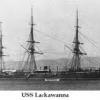-
Posts
3,084 -
Joined
-
Last visited
Reputation Activity
-
 Jaager got a reaction from Canute in black ash for ship modeling
Jaager got a reaction from Canute in black ash for ship modeling
It is a relatively soft hardwood ; less than Black Cherry, but about 50% harder than Yellow Poplar.
It should work fairly easily.
The negatives are a course grain and open pores. It does not scale well.
If you use it for hidden components, it should do OK.
If it is of a surface that is painted, an additional step to fill the pores (Plaster 0f Paris) would probably be needed.
Clear finished - the grain could be a distraction.
For frames on a fully planked hull, it should work and if you get a deal, save you money -
framing is probably the most timber intensive part and has the most waste.
Being softer, it will be easier to remove too much, too fast, so a light touch when shaping.
-
 Jaager got a reaction from Martin W in Carving tools, books and carving woods discussion
Jaager got a reaction from Martin W in Carving tools, books and carving woods discussion
Mike,
Swiss Pear is not a variety of pear. Pyrus communis is the common European Pear.
It is used as root stock for fruit pear varieties? The tree itself does not produce desirable
fruit but is a horticultural specimen? If the wood is steamed, it turns a uniform pink.
This treatment is the "Swiss" part. I believe that the wood from any type of pear -
Asian or European is excellent for any part of a wooden ship model: from keel and
frames to spars. If your stock did not split and check into useless fragments as it
dried or bark beetles did not mine it out , you may come to regret shortening the pieces.
Most any pear wood has a color that looks good as keel, frames and planking. It is
hard, tight grained, does not easily split if you carve against the grain - and seems
almost ivory-like in consistency.
When I posted earlier about Bradford Pear not having tight grain, that was the wrong term,
what I meant was that the tree grows rapidly - so the bands of Spring and Summer woods are
wide. For some parts it is possible to have what shows be grain free - all of one season. I have a bit of
Boxwood from an old hedge that had grown very slowly. The rings are very narrow and very
close together.
-
 Jaager got a reaction from EricWilliamMarshall in Carving tools, books and carving woods discussion
Jaager got a reaction from EricWilliamMarshall in Carving tools, books and carving woods discussion
Barlett pear is a variety of eatable pear. It is actually a variety of Pyrus communis - the tree that is
the source of what is called Swiss Pear. Swiss Pear is not a tree name or growth location, it means that the wood
has been steamed. I believe this oxidizes the polyphenols in the wood - in any case - it turns the wood into
a relatively uniform pinkish color.
Bradford Pear is a cousin that is a horticultural specimen. It does not produce significant fruit, but it is urban hardy,
attractive flowers and grows relatively fast. Was or still is popular as a street tree. It has one unfortunate characteristic -
the branches leave the trunk at an acute angle - rather than horizontal. The more vertical form looks good and is
predictable from design point of view. The problem is that when the larger trees experience wind storms, the branches
peal like banana skins. A good way for us to get a lot of sizable lumber stock. The other part - if you self harvest it -
because of the branch angle, it is difficult to get much stock with right angle grain for knees or breast hooks.
Actually, I think most any species of Pear would produce excellent wood for our purposes, the problem is obtaining it.
-
 Jaager got a reaction from EricWilliamMarshall in Carving tools, books and carving woods discussion
Jaager got a reaction from EricWilliamMarshall in Carving tools, books and carving woods discussion
Dogwood I have. A relative owns a tree farm in Caroline Co. and I have Dogwood and Holly from there.
The Holly has a yellowish tinge so even if there was interest in marketing that difficult species, the available
strain does not seem to be a desired one. For me, even the billets that have Blue Mold should be usable,
since the pure white version is not really appropriate for any ship timber.
The Dogwood was about as large as that species gets, so my billets are fairly large. Not large enough for
frame timbers at 1:48 or 1:60 scale, but I could use it for most any other part.
I am not sure that Crab Apple is all that different from regular Apple wood. One species that may be surprisingly
useful is Bradford Pear. It has anything but fine tight grain, but it is much harder than Black Cherry to carve,
does not want to split, and has a wax-like nature to it.
-
 Jaager got a reaction from EricWilliamMarshall in Carving tools, books and carving woods discussion
Jaager got a reaction from EricWilliamMarshall in Carving tools, books and carving woods discussion
Before the Dockyard tools - the suggestions involved making your own from steel rod
or knitting needles. Amazon sells packs of steel rods - some quite small.
The heating and blacksmithing and grinding edges onto rods as well as Rockwell scale tempering
and quenching is getting into a whole new set of skills. Dockyard did most of that for us, but if
they are gone, the tools can be home made.
As far as wood - I have my eye on genuine Boxwood and Dogwood. One that I not been able
to source is Hawthorn. There is a material that flashed in our world a while ago, but did not take
for some reason: an ivory substitute - Targa Nut.
-
 Jaager got a reaction from Anja in Greetings! and request for input on which ship for first POF
Jaager got a reaction from Anja in Greetings! and request for input on which ship for first POF
An advantage with scratch building is that a reasonable set of plans is all you need to start.
The one tool you do not mention is a saw capable of resawing 1" and 2" lumber into stock
for use with a thickness sander and the Byrnes saw. A 14" bandsaw is ideal, a tablesaw
can do it, but is more unforgiving and the loss to kerf is about twice or more.
For detailed plans ANCRE offers a sizable inventory of monographs of individual vessels and several are of a vessel complexity that
would make a prudent choice as an initial project: cutter, brig, schooner. These are French
in origin and there are also other smaller indigenous types. The French products are generally
elegant in design and appearance.
On cursory thought, the similar monographs for English or American vessels are 3 mast - larger
vessels that can be a bit over whelming for a beginner.
-
 Jaager got a reaction from mtaylor in Greetings! and request for input on which ship for first POF
Jaager got a reaction from mtaylor in Greetings! and request for input on which ship for first POF
An advantage with scratch building is that a reasonable set of plans is all you need to start.
The one tool you do not mention is a saw capable of resawing 1" and 2" lumber into stock
for use with a thickness sander and the Byrnes saw. A 14" bandsaw is ideal, a tablesaw
can do it, but is more unforgiving and the loss to kerf is about twice or more.
For detailed plans ANCRE offers a sizable inventory of monographs of individual vessels and several are of a vessel complexity that
would make a prudent choice as an initial project: cutter, brig, schooner. These are French
in origin and there are also other smaller indigenous types. The French products are generally
elegant in design and appearance.
On cursory thought, the similar monographs for English or American vessels are 3 mast - larger
vessels that can be a bit over whelming for a beginner.
-
 Jaager got a reaction from EJ_L in Greetings! and request for input on which ship for first POF
Jaager got a reaction from EJ_L in Greetings! and request for input on which ship for first POF
An advantage with scratch building is that a reasonable set of plans is all you need to start.
The one tool you do not mention is a saw capable of resawing 1" and 2" lumber into stock
for use with a thickness sander and the Byrnes saw. A 14" bandsaw is ideal, a tablesaw
can do it, but is more unforgiving and the loss to kerf is about twice or more.
For detailed plans ANCRE offers a sizable inventory of monographs of individual vessels and several are of a vessel complexity that
would make a prudent choice as an initial project: cutter, brig, schooner. These are French
in origin and there are also other smaller indigenous types. The French products are generally
elegant in design and appearance.
On cursory thought, the similar monographs for English or American vessels are 3 mast - larger
vessels that can be a bit over whelming for a beginner.
-
 Jaager got a reaction from geoff in Greetings! and request for input on which ship for first POF
Jaager got a reaction from geoff in Greetings! and request for input on which ship for first POF
An advantage with scratch building is that a reasonable set of plans is all you need to start.
The one tool you do not mention is a saw capable of resawing 1" and 2" lumber into stock
for use with a thickness sander and the Byrnes saw. A 14" bandsaw is ideal, a tablesaw
can do it, but is more unforgiving and the loss to kerf is about twice or more.
For detailed plans ANCRE offers a sizable inventory of monographs of individual vessels and several are of a vessel complexity that
would make a prudent choice as an initial project: cutter, brig, schooner. These are French
in origin and there are also other smaller indigenous types. The French products are generally
elegant in design and appearance.
On cursory thought, the similar monographs for English or American vessels are 3 mast - larger
vessels that can be a bit over whelming for a beginner.
-
 Jaager got a reaction from mtaylor in Recommendations For A Good Milling Machine
Jaager got a reaction from mtaylor in Recommendations For A Good Milling Machine
I have the Unimat SL1000 and it sets up as a mill.
I ordered a spare Al bed and intend to cut and
mount it at the rear center of the ways to get full excursion up
and down the ways. I have not done it yet.
I also got the lathe duplication jig from Penn Valley.
My focus has been on lofting and framing so I have not needed either
function for a while.
-
 Jaager got a reaction from Canute in Recommendations For A Good Milling Machine
Jaager got a reaction from Canute in Recommendations For A Good Milling Machine
I have the Unimat SL1000 and it sets up as a mill.
I ordered a spare Al bed and intend to cut and
mount it at the rear center of the ways to get full excursion up
and down the ways. I have not done it yet.
I also got the lathe duplication jig from Penn Valley.
My focus has been on lofting and framing so I have not needed either
function for a while.
-
 Jaager got a reaction from mtaylor in Steel's Naval Architecture
Jaager got a reaction from mtaylor in Steel's Naval Architecture
Dan,
I was commenting on the book. I had not seen this topic until you revived it Anyway, I checked and my reprint is of the 1805 edition
and Plate 38 is the last in the Plates supplement volume.
-
 Jaager got a reaction from Canute in Steel's Naval Architecture
Jaager got a reaction from Canute in Steel's Naval Architecture
Dan,
I was commenting on the book. I had not seen this topic until you revived it Anyway, I checked and my reprint is of the 1805 edition
and Plate 38 is the last in the Plates supplement volume.
-
 Jaager got a reaction from Bob Cleek in Steel's Naval Architecture
Jaager got a reaction from Bob Cleek in Steel's Naval Architecture
Allan Yedlinsky - SCANTLINGS OF THE ROYAL NAVY 1719-1805
Seawatch Books
is much easier to use and has much more data. I have a
reprint of Steel by Sim Comfort but the Yedlinsky volume is
easier to use -
-
 Jaager got a reaction from Canute in Steel's Naval Architecture
Jaager got a reaction from Canute in Steel's Naval Architecture
Allan Yedlinsky - SCANTLINGS OF THE ROYAL NAVY 1719-1805
Seawatch Books
is much easier to use and has much more data. I have a
reprint of Steel by Sim Comfort but the Yedlinsky volume is
easier to use -
-
 Jaager got a reaction from Estoy_Listo in Glue
Jaager got a reaction from Estoy_Listo in Glue
I think this is one of those personal - possessive opinion subjects - sort of "love me, love my....." subjects.
For wood to wood - PVA is an excellent choice. Known as carpenter's wood glue. It comes in in several options: white and yellow are the high inventory varieties. I think yellow produces the stronger bond. I want resistance to humidity so I use Titebond II. If I was making a pond boat, I would use Titebond III.
Unlike what I did, you should probably avoid the high volume - lower unit cost option and get the 4 oz (120ml) size. It does have excellent shelf life, but fresh is probably the wiser choice.
For metal to wood - two part epoxy - mixing time option - "you pays your money and you takes your chances".
For rigging, natural fiber, neutral pH bookbinders PVA.
I am biased against "super glue". I suspect that the chemical reaction that makes it fast also makes it continue going and produce a brittle bond after a decade or two. It is also difficult to keep from reacting in the container over time.
-
 Jaager got a reaction from Canute in Belt sander proxxon 28 536
Jaager got a reaction from Canute in Belt sander proxxon 28 536
If you wish to try the concept and are in US : Harbor freight has a generic version
of this tool - $ 33 with the 20% discount $27. I have not bitten, so I can't rate the
quality or durability.
I did get their 4 x 36 belt sander - during a periodic sale - plus 20% coupon - it was ~ $ 50
I have not used it much yet, but it is sturdy - did not mount the disc sander attachment.
-
 Jaager got a reaction from mtaylor in Sheer and camber
Jaager got a reaction from mtaylor in Sheer and camber
Another armchair experiment ( denken experimenten ) :
The area to be covered by a plywood sub-deck is not accurately represented by a 2D Waterline plan. There is a depth dimension that increases the area to be covered.
Thought: using thick paper, the precise area could be had by using it to cover the area. Then, why not thin hard poster board. It is flexible, yet stiff.
THEN: Why not try using the poster board as the actual sub-deck? Once in place, give it a coat of thinned PVA and let it dry. This will compensate for the too far apart
mold supports and the PVA should stiffen up the poster board. Then a veneer of Hard Maple in planks can be laid. The veneer can be cut using a steel edge and sharp
edged tool. No saw would be needed.
-
 Jaager got a reaction from mtaylor in Sheer and camber
Jaager got a reaction from mtaylor in Sheer and camber
If you use hitch chucks with the pins - more force on the hold down is possible
and that makes for a stronger bond.
A hitch chuck is a small piece of scrap wood that you drill a hole thru and
have between the head of the pin and the wood that you are clamping.
The pin can be tapped and bend getting more force. The chock can be
split off if necessary to grip the pin to remove it. I mostly use a a curved
Kelly clamp ( hemostat ) to remove the pins. Resting on a piece of planking,
the curved clamp makes a good prise
-
 Jaager got a reaction from mtaylor in Belt sander proxxon 28 536
Jaager got a reaction from mtaylor in Belt sander proxxon 28 536
If you wish to try the concept and are in US : Harbor freight has a generic version
of this tool - $ 33 with the 20% discount $27. I have not bitten, so I can't rate the
quality or durability.
I did get their 4 x 36 belt sander - during a periodic sale - plus 20% coupon - it was ~ $ 50
I have not used it much yet, but it is sturdy - did not mount the disc sander attachment.
-
 Jaager got a reaction from mtaylor in Oscillating Spindle Sander to get one or not.
Jaager got a reaction from mtaylor in Oscillating Spindle Sander to get one or not.
I think this sort of tool is the most efficient for shaping frames.
A tilting table is not helpful for sanding frames. The bevel is in constant change in angle.
I have to do it in the air. A tilting table is a source for mis-adjustment. The table is OK for
support for extreme outer shape and inside most mould line.
The main use that I can see for the tilting table would be for cutting a bevel on a waterway.
There are ways to do that.
I wish to use stock sheet sandpaper instead of the pre-formed tubes - cost and to deal with
my aversion to being beholden to a single source for disposable media.
The spindle ossilating motion is not one I wish to use.
I made my own, using a 1/3 HP reversible motor. The CW-CCW rotation option is helpful in sanding
the top of frames. The open ends respond better to pull than push. The sleeveless drums I use all mount
on the bare 1/2" motor shaft and I can mount cutting burrs and rotary shapers.
They are of some help, but 60 -80 grit sandpaper does bulk removal at least as well.
A drill press - the motor is in the way. If it could be rotated 180 degrees - it could do -
if you can get 1700 RPM out of it.
-
 Jaager got a reaction from mtaylor in More tools - Luthier, jeweler, fly-tying
Jaager got a reaction from mtaylor in More tools - Luthier, jeweler, fly-tying
Vossie,
For ready tool storage I use brick size blocks of 2 inches of Styrofoam
insulation. PVA glue it to a bit larger wood base. Here I had to glue
two 1 inch pieces - Home Depot sells 2 x 2 project sheets.
It does not take well to hot glue and I think contact cement melts it too.
-
 Jaager got a reaction from mtaylor in Raised grain / grain definition
Jaager got a reaction from mtaylor in Raised grain / grain definition
This comes from instructions for wood dyes:
Dissolved in alcohol - the dye does not penetrate as deeply- but it has no effect on the wood surface.
Dissolved in water - the dye penetrates deeply - but raises the grain.
Pre-treatment with 10% PVA in water, dry then sand the surface - the next water exposure with the dye will not further raise the grain.
Based on this, wet your surface with 10% PVA in water and let it dry. If it raises the grain too much, try a light sanding with 320 or 400 grit.
-
 Jaager got a reaction from mtaylor in Hello from Virginia!
Jaager got a reaction from mtaylor in Hello from Virginia!
I was stationed at St. E's and lived at exit 2 - Telegraph Hill for 2 years. Traffic was fun in '70-'72
so it must be even for fun now. Interesting when they opened the Wilson bridge at rush hour or
waiting for it next to Blue Plains in August with no AC. Bart was just a hole near the Mall, so no
mass transit then. What with all the water features, traffic in Hampton Roads is pretty interesting itself.
-
 Jaager got a reaction from mtaylor in Hello from Virginia!
Jaager got a reaction from mtaylor in Hello from Virginia!
Welcome aboard.
Where in Virginia are you?





.thumb.jpeg.fc5d633a7b34428fcf19419a73d56d55.jpeg)


